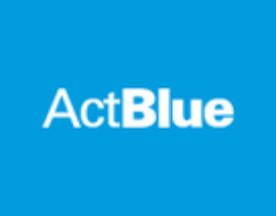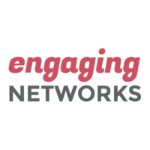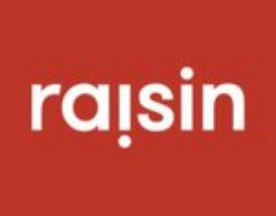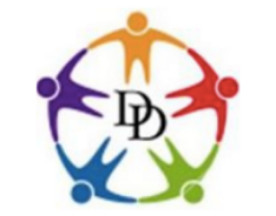What are donation request ? Donation requests are appeals made by individuals or organizations to gather financial or material support for a cause or project.
Donation requests are a common way for non-profit organizations, schools, and other groups to raise funds for their various causes. A donation request is a written or verbal appeal for funds, goods, or services that can be used to support a particular organization or cause. Typically, donation requests are made to individuals, businesses, or other organizations that have the potential to provide financial or other types of support.
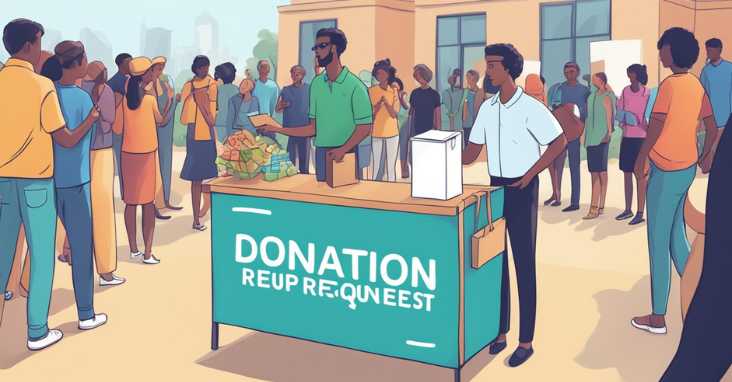
Understanding donation requests is an important part of fundraising for any organization. There are many different types of donation requests, and each one requires a different approach. For example, a donation request to an individual may be more personal and emotional, while a request to a business may need to focus more on the benefits of supporting the organization. Additionally, there are legal and ethical considerations that must be taken into account when making donation requests, such as ensuring that all donations are used for their intended purpose and that donors are properly acknowledged.
Key Takeaways
- Donation requests are a common way for organizations to raise funds for their causes.
- Understanding the different types of donation requests and the legal and ethical considerations is important for successful fundraising.
- Tailoring donation requests to the intended audience and properly acknowledging donations are key strategies for success.
Here is an external resource with high authority on the topic of donation requests.
Understanding Donation Requests
Donation requests are a common way for non-profit organizations to raise money for their cause. By reaching out to donors and asking for their support, non-profits can receive both monetary and in-kind donations to help further their mission. In this section, we will explore the basics of donation requests, the types of donations that can be requested, and the role of donation requests in fundraising.
The Basics of Donation Requests
A donation request is an appeal made by a non-profit organization to potential donors asking for their support. These requests can come in many forms, including donation request letters, fundraising campaigns, and personal solicitations. The goal of a donation request is to encourage individuals or businesses to give to the non-profit organization in order to support its mission.
Types of Donations
There are two main types of donations that can be requested: monetary donations and in-kind donations. Monetary donations are cash contributions made by donors to the non-profit organization. In-kind donations, on the other hand, are non-cash contributions such as goods or services that can be used by the non-profit organization to further its mission.
The Role of Donation Requests in Fundraising
Donation requests play a crucial role in fundraising for non-profit organizations. By reaching out to potential donors and asking for their support, non-profits can raise the funds needed to carry out their mission. Donation requests can also help to build relationships between donors and non-profits, as donors may feel more connected to the cause after giving their support.
To learn more about donation requests and how they can benefit non-profit organizations, check out this resource.
Preparing to Write a Donation Request
When writing a donation request, it is important to properly prepare in order to maximize the chances of success. This section will cover some key steps to take before beginning to write the request.
Identifying the Audience
The first step in preparing to write a donation request is to identify the target audience. This could be individuals, corporations, or any other group that may be interested in supporting the cause. It is important to understand the audience in order to craft a message that will resonate with them and motivate them to donate.
Crafting the Message
Once the audience has been identified, the next step is to craft a message that will effectively communicate the mission and impact of the organization. Storytelling can be a powerful tool in conveying the importance of the cause and the impact that donations can have. It is important to be clear and concise in the message, avoiding exaggerated or false claims.
Setting the Fundraising Goal
Another important aspect of preparing to write a donation request is setting a fundraising goal. This should be a realistic and achievable goal that will provide the necessary funds to support the mission of the organization. It is important to communicate this goal clearly to donors in order to motivate them to contribute.
To learn more about preparing to write a donation request, check out this guide from Nonprofit Hub.
Writing a Donation Request Letter

When it comes to writing a donation request letter, it’s important to structure the letter in a clear and concise manner. This will make it easier for the donor to understand the purpose of the letter and to take action. Here are some tips for structuring the letter:
Structuring the Letter
- Start with an attention-grabbing opening that clearly states the purpose of the letter.
- Provide a brief overview of the organization and the work it does.
- Clearly state the reason for the donation request and how the donation will be used.
- Provide specific examples of how the donation will make a difference.
- Close the letter with a clear call to action and a thank you.
Personalization Techniques
When writing a donation request letter, personalization can go a long way in making a connection with the donor. Here are some personalization techniques to consider:
- Use the donor’s name in the letter.
- Reference any previous donations the donor has made.
- Use donor data to tailor the ask to the donor’s interests and giving history.
Making a Compelling Call to Action
The call to action is a critical part of the donation request letter. It’s important to make the call to action compelling and easy to follow. Here are some tips for making a compelling call to action:
- Use action-oriented language such as “donate now” or “make a difference today.”
- Provide clear instructions on how to donate, including donation amounts and any specific instructions.
- Make it easy for the donor to donate by including a link to an online donation form or providing a pre-addressed envelope for mail-in donations.
For more information on writing a donation request letter, check out this resource from The Balance Small Business.
Donation Request Strategies

When it comes to soliciting donations, there are several effective strategies that organizations can use to maximize their fundraising efforts. Here are three proven approaches that can help increase donations:
Direct Mail Campaigns
Direct mail campaigns involve sending donation requests via postal mail to a list of potential donors. This method can be particularly effective for reaching older donors who may not be as tech-savvy or active online. To make the most of a direct mail campaign, organizations should invest in high-quality printing and design, as well as personalized messaging that speaks directly to the recipient. Including a self-addressed stamped envelope can also make it easier for donors to contribute.
According to a study by Nonprofit Source, direct mail has a response rate of 4.4%, compared to just 0.12% for email. This demonstrates the continued effectiveness of direct mail campaigns in soliciting donations.
Email and Online Campaigns
Email and online campaigns are becoming increasingly popular ways to solicit donations, especially among younger donors who are more likely to be active online. Organizations can use email to send personalized donation requests and links to fundraising pages, making it easy for donors to contribute online. Social media can also be a powerful tool for spreading the word about fundraising efforts and encouraging donations.
To make the most of email and online campaigns, organizations should invest in professional-looking design and messaging that is clear and compelling. They should also make it easy for donors to contribute by including links to fundraising pages and providing multiple payment options.
Event-Based Fundraising
Event-based fundraising involves hosting events such as galas, auctions, and charity runs to raise money for a cause. These events can be a fun and engaging way to solicit donations, as well as a way to build relationships with donors and raise awareness for a cause.
To make the most of event-based fundraising, organizations should focus on creating a memorable experience for attendees and providing opportunities for them to donate. This can include silent auctions, raffles, and other fundraising activities. It’s also important to follow up with attendees after the event to thank them for their support and encourage continued involvement.
Overall, there are several effective strategies that organizations can use to solicit donations. By using a combination of direct mail, email and online campaigns, and event-based fundraising, organizations can maximize their fundraising efforts and make a real impact for their cause.
For more information on donation request strategies, check out this resource from The Balance Small Business: 10 Donation Request Tips for Beginner Fundraisers.
Corporate and Business Donations

Corporate and business donations are an essential part of many non-profit organizations’ funding sources. These donations can come in various forms, including monetary contributions, in-kind donations, and volunteer time. In this section, we will discuss corporate donation requests, sponsorship, and partnerships.
Corporate Donation Requests
Corporate donation requests are formal requests made by non-profit organizations to corporations for financial contributions or other forms of support. These requests are usually made to companies that have a history of supporting charitable causes or have a mission that aligns with the non-profit organization’s goals.
When making a corporate donation request, it is essential to research the company’s giving history and guidelines to ensure that the request aligns with their philanthropic goals. Non-profit organizations should also be clear about how the donation will be used and the impact it will have on their mission.
Sponsorship and Partnerships
Sponsorship and partnership are two other ways that non-profit organizations can receive support from corporations and local businesses. Sponsorship involves a company providing financial support in exchange for recognition or exposure. Partnerships, on the other hand, involve a more significant commitment from both parties, with the goal of achieving a shared mission.
When seeking sponsorship or partnership, non-profit organizations should be clear about the benefits that the company will receive, such as exposure to a particular audience or increased brand recognition. In return, the non-profit organization should also receive tangible benefits, such as financial support or access to resources.
It is essential to note that corporate donations, sponsorship, and partnerships should be approached with care and consideration. Non-profit organizations should ensure that they are not making exaggerated or false claims and that they are transparent about how the donations will be used.
To learn more about corporate donations and partnerships, visit Charity Navigator.
Legal and Ethical Considerations

When requesting donations, there are several legal and ethical considerations that nonprofit organizations must keep in mind. Failure to comply with these regulations can result in legal consequences and damage to the organization’s reputation.
Compliance with IRS Regulations
Nonprofit organizations must comply with IRS regulations in order to maintain their tax-exempt status. This includes filing annual tax returns and providing donors with receipts for their donations. It is important for organizations to keep accurate records of all donations received, as well as any expenses related to fundraising.
According to the IRS, donations must be made voluntarily and without expectation of receiving anything in return. Nonprofit organizations must also avoid engaging in any political campaigning or lobbying activities, as this can jeopardize their tax-exempt status.
Transparency and Donor Privacy
Transparency is key when requesting donations. Nonprofit organizations should clearly communicate their mission, goals, and how donations will be used. Donors should also be informed of the organization’s financial status and how their donations will be allocated.
Donor privacy is also an important consideration. Nonprofit organizations must keep donor information confidential and only use it for the purpose for which it was given. Organizations should also provide donors with the option to remain anonymous if they wish.
It is important for nonprofit organizations to establish and maintain trust with their donor base. By following legal and ethical guidelines, organizations can build a positive reputation and ensure the longevity of their mission.
For more information on legal and ethical considerations for nonprofit organizations, visit Charity Navigator.
Managing and Acknowledging Donations

Recording and Tracking Donations
Recording and tracking donations is a crucial aspect of managing donations. Without proper record-keeping, it can be challenging to keep track of donations and donor data accurately. To ensure that every donation is accounted for, organizations should maintain a donation log or database. This log should include donor information, donation amount, date of donation, and any other relevant information.
One effective way to track donations is by using donation management software. Such software can help organizations keep track of donor data, donation amounts, and recurring donations. Additionally, it can generate reports and analytics that can help organizations understand their donor base and identify trends.
Donor Appreciation and Retention
Donor appreciation is a critical component of managing donations. Showing gratitude to donors can help organizations retain them and encourage them to donate again in the future. Organizations should acknowledge donations promptly and in a personalized manner. This can be done through a thank-you note, email, or phone call.
Organizations can also show appreciation by recognizing donors publicly. This can be done by including their names in newsletters, annual reports, or on the organization’s website. Additionally, organizations can create donor recognition programs that offer incentives to donors who make recurring donations or donate a certain amount.
Retaining donors is essential for the long-term success of an organization. By keeping track of donor data and showing appreciation, organizations can build strong relationships with their donors and encourage them to continue supporting their cause.
It is important to note that managing and acknowledging donations is an ongoing process. Organizations should continuously evaluate their donation management practices and make improvements where necessary.
To learn more about managing and acknowledging donations, visit Charity Navigator.
Leveraging Technology and Social Media
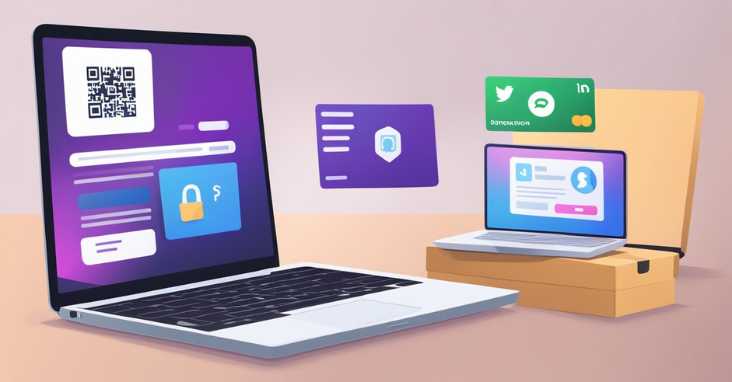
In today’s digital age, leveraging technology and social media is a crucial aspect of any successful fundraising appeal. By utilizing these powerful tools, organizations can reach a wider audience, increase awareness, and ultimately raise more funds for their cause.
Fundraising Software Solutions
One of the most effective ways to streamline the donation process and manage donor data is by using fundraising software solutions. These solutions offer a range of features, such as online donation forms, peer-to-peer fundraising, and automated thank-you messages, that can help organizations increase their fundraising efforts. Some popular fundraising software solutions include:
- DonorPerfect: This cloud-based fundraising software offers a range of features, including online donation forms, event management, and donor management tools.
- Fundly: Fundly is a peer-to-peer fundraising platform that allows individuals to create their own fundraising pages and share them on social media.
- Classy: Classy is an all-in-one fundraising platform that offers online donation forms, peer-to-peer fundraising, and event management tools.
Social Media Outreach
Social media channels, such as Facebook, Twitter, and Instagram, provide an excellent platform for organizations to increase awareness and engage with potential donors. By creating compelling content and sharing it on social media, organizations can reach a wider audience and encourage them to donate to their cause. Some tips for effective social media outreach include:
- Create engaging content: Share stories, photos, and videos that showcase your organization’s impact and inspire people to get involved.
- Use hashtags: Hashtags can help your content reach a wider audience and make it easier for people to find your organization.
- Engage with your followers: Respond to comments and messages promptly and encourage your followers to share your content with their own networks.
By leveraging technology and social media, organizations can increase awareness, streamline the donation process, and ultimately raise more funds for their cause. To learn more about fundraising software solutions and social media outreach, check out this resource, which offers additional tips and insights on these topics.
Tips and Best Practices

When it comes to donation requests, there are several tips and best practices that can help ensure a successful fundraiser. Whether it’s a professional and formal request or a general donation request, following these guidelines can make a significant difference in the outcome.
Effective Fundraising Tips
One of the most important things to keep in mind when requesting donations is to be clear and concise about the cause. People want to know what their money is going towards, so it’s essential to provide a detailed explanation of the purpose of the fundraiser. Additionally, creating a sense of urgency can motivate people to donate. Setting a specific goal and deadline can help create a sense of urgency and encourage people to act quickly.
Another effective fundraising tip is to leverage social media. With billions of people using social media platforms, it’s an excellent way to reach a large audience quickly. Creating a compelling message and sharing it across various social media channels can help increase visibility and encourage people to donate.
Common Mistakes to Avoid
While there are several best practices to follow when requesting donations, there are also some common mistakes to avoid. One of the most significant mistakes is not providing enough information about the cause. People want to know what their money is going towards, so it’s essential to provide a detailed explanation of the purpose of the fundraiser.
Another common mistake is not setting a specific goal or deadline. Without a clear goal or deadline, people may not feel a sense of urgency to donate, which can lead to a lack of donations. Additionally, not leveraging social media can also be a significant mistake. With billions of people using social media platforms, it’s an excellent way to reach a large audience quickly.
When requesting donations, it’s essential to keep these tips and best practices in mind. By being clear and concise about the cause, creating a sense of urgency, leveraging social media, and avoiding common mistakes, it’s possible to have a successful fundraiser. For more information on effective fundraising tips and common mistakes to avoid, check out this resource.
Frequently Asked Questions

How can I write an effective donation request letter?
Writing an effective donation request letter is crucial for a nonprofit organization to receive donations. The letter should be concise, clear, and compelling. It should include the organization’s mission, the specific purpose of the donation, and how the donation will be used. Personalizing the letter and addressing it to the recipient can also increase the chances of receiving a donation. For more tips on how to write an effective donation request letter, visit The Balance Small Business.
What are the guidelines for submitting an online donation request for a nonprofit organization?
Many nonprofit organizations have an online donation request form that donors can fill out. The guidelines for submitting an online donation request vary by organization, but typically, the form will ask for the donor’s name, contact information, donation amount, and payment information. Some organizations may also require additional details about the purpose of the donation. It’s important to read and follow the instructions provided by each organization to ensure that the donation request is properly submitted.
Are there specific requirements for requesting a donation in Illinois?
In Illinois, nonprofit organizations must register with the Illinois Attorney General’s office before soliciting donations. The registration process includes submitting an application, paying a fee, and providing various documents. Additionally, Illinois has specific regulations regarding the solicitation of donations, including requirements for disclosure statements and record-keeping. For more information on the requirements for requesting a donation in Illinois, visit the Illinois Attorney General’s website.
What is the process for requesting a donation from a Chicago-based sports team?
Chicago-based sports teams receive numerous donation requests and typically have a formal process for reviewing and approving them. The process varies by team, but generally, donation requests should be submitted online or by mail and include information about the organization, the purpose of the donation, and how the donation will be used. Some teams may also require additional documentation, such as a tax-exempt status certificate. For more information on the donation request process for a specific Chicago-based sports team, visit their website or contact their community relations department.
Can I request donations for a personal cause, and if so, how?
It is possible to request donations for a personal cause, such as medical expenses or funeral costs, through crowdfunding platforms such as GoFundMe or YouCaring. These platforms allow individuals to create a fundraising campaign and share it with their network of friends and family. It’s important to be transparent about the purpose of the fundraiser and provide regular updates to donors. It’s also important to note that donations to personal causes are generally not tax-deductible.
What information should be included in a donation request to a corporate entity?
When requesting a donation from a corporate entity, it’s important to research the company’s giving priorities and guidelines. The donation request should include information about the organization, the purpose of the donation, and how the donation will be used. It should also explain how the donation aligns with the company’s giving priorities and how it will benefit the community. For more tips on how to request a donation from a corporate entity, visit The Balance Small Business.




